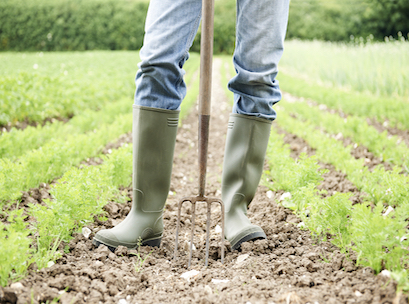 Farmers for Climate Action boss has said Australian farmers are facing working under more extreme conditions as politicians debate what to do about climate change.
Farmers for Climate Action boss has said Australian farmers are facing working under more extreme conditions as politicians debate what to do about climate change.
The Bureau of Meteorology’s Annual Climate Statement spelled out what many farmers live and feel, said Verity Morgan-Schmidt, CEO of Farmers for Climate Action.
According to the organisation, 2017 was the country’s third-warmest year since 1900. From the southwest of Western Australia, up through the Murray-Darling and into Queensland’s cattle and cane country records have tumbled with warm, dry winters disrupting and damaging food production.
“Since Federation the country has warmed by 1.1 °C,” Morgan-Schmidt said. “Australian farmers must do more and more to adapt, but there’s only so much you can do about extreme weather like heatwaves and floods, and only so much you can prepare for.”
By October last year, Australia’s crop production was projected to crash more than 40 per cent from the year prior and significantly below the 10-year average. The extra dry, sunny winter days saw severe frosts take big bites out of many crops across the south and east, including cereals, oilseeds, legumes, fruits and winegrapes. In spring, the weather swung from the very dry to the very wet, with torrential rains causing major disruptions to harvests in Victoria and New South Wales.
“For farmers, it’s just one thing after another,” Morgan-Schmidt said.
She said 2017 was also the year the Nationals’ federal conference attacked homegrown clean power, moving a motion against renewable energy in the bush. Thousands of farmers signed an open letter to the Nationals in protest while pastoralists rallied against the Adani coal mine.
“It beggars belief that some political leaders are still denying or downplaying climate risks to Australian agriculture,” Morgan-Schmidt said. “Policy leadership and certainty are sorely needed so farmers can reap the rewards of the global shift to clean power. If you’re not prepared to lead, then please, get out of the way, and let us get on with the job ourselves.”
The Australian Government’s latest emissions data, released just before Christmas, shows pollution keeps rising.
BOM key findings:
- Widespread warmth persistent throughout 2017, with March, July, August, October and December all amongst the ten warmest on record for Australian mean temperature for their respective months
- Rainfall was below average for much of eastern Australia for areas between central Queensland and eastern Victoria, all of Tasmania, and along the west coast of Western Australia
- In NSW: Warmest year on record for state’s mean and daytime temperatures. Maximum temperatures were the warmest on record in parts of the Hunter, Metropolitan, Central Tablelands, and Upper Western districts.
- In VIC: March was warmest month on record and November the second-warmest. June was the driest on record. Two sites in West Gippsland had their highest mean daily maximum temperature on record
- In QLD: Warmest year on record, with a mean temperature 1.40 °C above average and 0.15 °C warmer than the previous record from 2005. There were three distinct heatwaves at the beginning of the year, with a number of spots recording their highest daily temperature on record or their warmest night. Severe tropical cyclone Debbie hit on March 28, and extensive flooding associated with this followed.
- NT: Warmest daytime temperature on record during May-September dry season.
- TAS: Warm, and highly variable. March, October and November were especially warm, with several sites breaking monthly records. Launceston (37 years of record) had its warmest night (highest daily minimum temperature) on record on March 16.
- SA: Fifth-warmest year on record with extreme heat in January and February. Rainfall above average in the northwest and parts of the southeast, and drier than average in far north and most of the central agricultural districts.
- ACT: Mean maximum temperature for ACT was the third-warmest on record. There was a very warm start to year: the mean maximum in January was the warmest ever recorded at Canberra Airport.
- WA: Rainfall was above average for Western Australia and the ninth-wettest year on record. There were two tropical cyclones (Blanche and 22U) and six tropical lows between January and April, plus tropical cyclone Hilda at the year’s end. Many sites reported daily rainfall records, and there was significant flooding.











